Understanding the Basics of Double-Ridged Waveguide Magic Tee: What is it and How Does it Work?
The Double-Ridged Waveguide Magic Tee represents a cornerstone component in modern microwave engineering, combining sophisticated electromagnetic principles with practical applications across multiple industries. This specialized waveguide structure serves as a crucial four-port device that enables precise power distribution and signal synthesis in microwave systems. By leveraging innovative ridge technology within traditional waveguide architecture, the Double-Ridged Waveguide Magic Tee achieves superior bandwidth capabilities while maintaining excellent isolation between ports. This revolutionary design allows for efficient power splitting, combining, and signal routing across frequencies ranging from 2 GHz to an impressive 110 GHz, making it an indispensable element in advanced communication systems, radar applications, and satellite technologies where signal integrity and power management are paramount concerns.
Fundamental Principles and Design Elements of Double-Ridged Waveguide Magic Tee
The Evolutionary Design of Ridged Waveguide Technology
The Double-Ridged Waveguide Magic Tee represents a significant advancement over conventional waveguide structures, incorporating specialized ridge elements that fundamentally transform its electromagnetic characteristics. These ridges—protruding metal structures that extend inward from opposite walls of the waveguide—create a unique electromagnetic environment that dramatically expands operational bandwidth while maintaining critical performance parameters. The dual-ridge structure is particularly significant as it creates a more complex electromagnetic field distribution compared to single-ridged or standard rectangular waveguides. This sophisticated design allows the Double-Ridged Waveguide Magic Tee to support multi-mode propagation while simultaneously minimizing higher-order mode interference, a critical factor in maintaining signal integrity across broader frequency ranges. Advanced Microwave Technologies Co., Ltd. has perfected this design through decades of research and development, producing Double-Ridged Waveguide Magic Tees that achieve exceptional bandwidth-to-size ratios while maintaining excellent power handling capabilities and impedance matching across the entire operational spectrum from 2 GHz to 110 GHz.
Port Configuration and Electromagnetic Interactions
The Double-Ridged Waveguide Magic Tee features a distinctive four-port configuration that enables sophisticated signal manipulation capabilities. Each port serves a specific function within the overall operation of the device, with precise electromagnetic interactions occurring at the junction where all four ports converge. The typical configuration includes an H-arm (sum port), E-arm (difference port), and two collinear ports that facilitate balanced power distribution. When a signal enters through the H-arm of the Double-Ridged Waveguide Magic Tee, the electromagnetic energy divides equally between the collinear ports while maintaining phase coherence. Conversely, when a signal enters through the E-arm, the energy similarly divides between the collinear ports but with a 180-degree phase difference between them. These properties enable the Double-Ridged Waveguide Magic Tee to function effectively as both a power divider and combiner with exceptional isolation characteristics. Advanced Microwave's implementation achieves isolation values of ≥30 dB between ports, ensuring minimal signal crosstalk and interference even in complex multi-channel systems. This superior isolation is crucial for maintaining signal independence and stability, particularly in high-precision applications such as military radar systems and satellite communications where signal integrity directly impacts operational effectiveness.
Material Science and Manufacturing Precision
The performance excellence of the Double-Ridged Waveguide Magic Tee is deeply rooted in the materials selected and manufacturing precision employed in its production. Advanced Microwave Technologies Co., Ltd. utilizes premium-grade aluminum and copper in the construction of these sophisticated components, materials chosen specifically for their superior conductivity, thermal stability, and mechanical durability. The selection between aluminum and copper depends on the specific application requirements, with aluminum offering lighter weight advantages for aerospace applications and copper providing superior conductivity for high-power applications. The manufacturing process involves precision machining with tolerances measured in micrometers, ensuring dimensional accuracy critical to maintaining consistent impedance (50 Ohms) throughout the waveguide structure. This manufacturing precision directly contributes to the exceptional performance specifications of Advanced Microwave's Double-Ridged Waveguide Magic Tee, including insertion loss values of ≤0.3 dB across the operational frequency range. Furthermore, specialized surface treatments are applied to enhance conductivity and prevent oxidation, ensuring that performance parameters remain stable even under challenging environmental conditions ranging from -40°C to +85°C. Each unit undergoes rigorous quality control procedures, including network analyzer testing across multiple frequencies, to verify compliance with ISO 9001:2008 and RoHS standards before deployment in mission-critical applications.
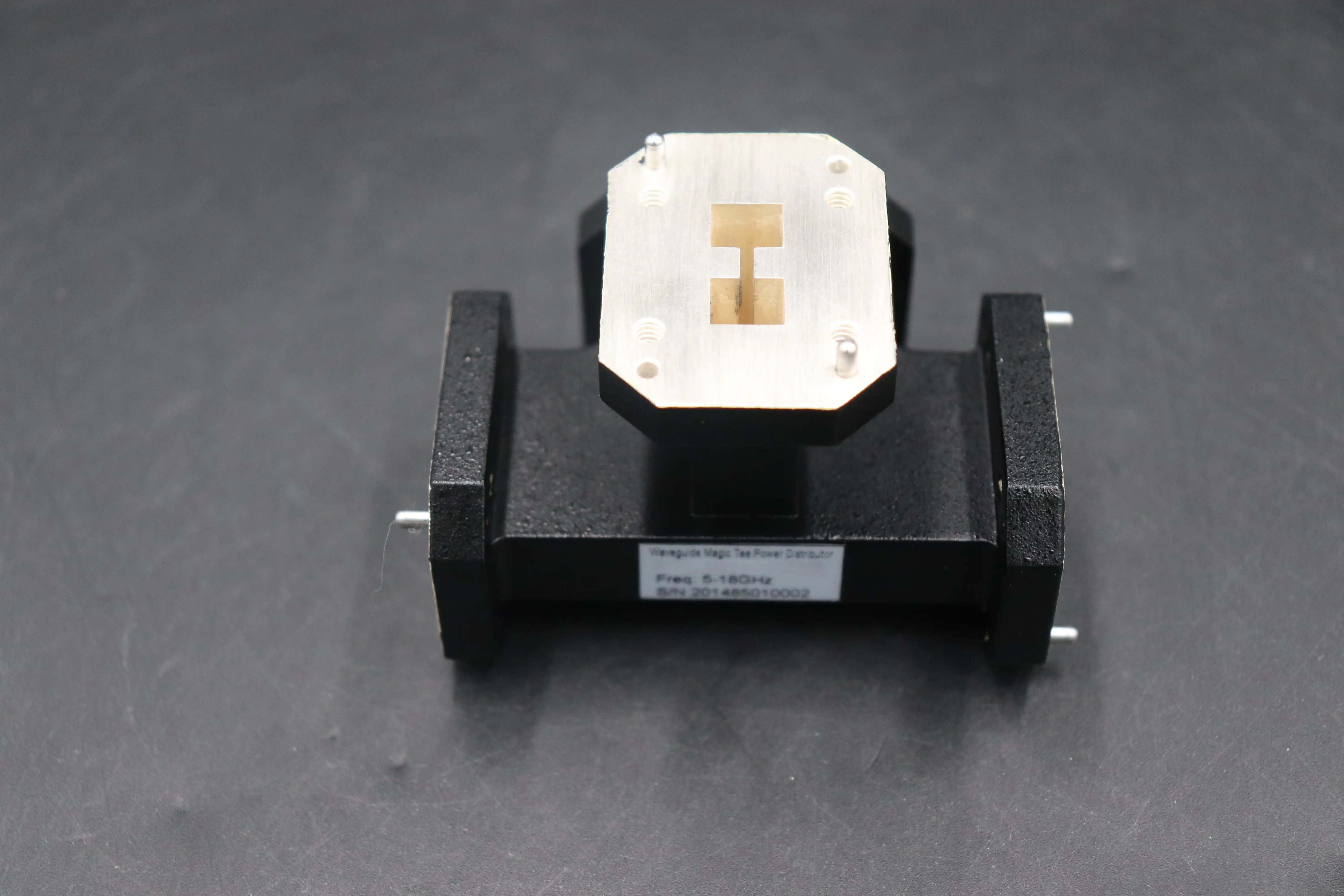
Performance Characteristics and Technical Advantages of Double-Ridged Waveguide Magic Tee
Broadband Capabilities and Frequency Response
The Double-Ridged Waveguide Magic Tee manufactured by Advanced Microwave Technologies Co., Ltd. exhibits exceptional broadband capabilities that distinguish it from conventional waveguide components. The innovative double-ridge design enables this component to operate efficiently across an impressive frequency spectrum ranging from 2 GHz to 110 GHz, providing consistent performance throughout this extensive bandwidth. This remarkable frequency range versatility is achieved through careful electromagnetic field manipulation within the ridge structure, which effectively lowers the cutoff frequency while simultaneously suppressing higher-order modes that would otherwise create signal distortion. The broadband nature of the Double-Ridged Waveguide Magic Tee makes it particularly valuable in systems requiring multi-band operation or frequency-agile capabilities. Advanced Microwave's implementation maintains exceptionally flat frequency response characteristics, with minimal amplitude and phase variations across the operational band, ensuring signal fidelity in applications where precise frequency response is critical. This consistency across such a wide frequency range eliminates the need for multiple waveguide components tuned to different frequency bands, simplifying system design, reducing component count, and improving overall reliability while decreasing potential failure points in complex microwave systems.
Power Handling and Efficiency Metrics
The Double-Ridged Waveguide Magic Tee from Advanced Microwave Technologies demonstrates superior power handling capabilities that directly address the demanding requirements of high-power microwave applications. The specialized ridge geometry creates a more distributed electromagnetic field pattern that significantly enhances power handling capacity compared to conventional waveguide structures, allowing these components to manage substantial power levels without compromising performance or risking breakdown. This robust power handling capability is complemented by exceptional efficiency metrics, particularly evident in the component's remarkably low insertion loss of ≤0.3 dB. This minimal signal attenuation ensures that virtually all input power is effectively transferred through the Double-Ridged Waveguide Magic Tee to its intended outputs, maximizing system efficiency and minimizing heat generation—a critical consideration in high-power applications. The high-efficiency characteristics are maintained across the entire operational frequency range, with performance parameters remaining stable even during continuous high-power operation. Advanced Microwave's design incorporates specialized thermal management considerations, including optimized material selection and structural geometry, that facilitate effective heat dissipation under sustained high-power conditions. These exceptional power handling and efficiency metrics make the Double-Ridged Waveguide Magic Tee an ideal choice for applications such as high-power radar systems, satellite communication uplinks, and industrial microwave processes where power efficiency directly impacts operational capabilities and energy consumption costs.
Isolation Performance and Signal Integrity
One of the most critical performance parameters of the Double-Ridged Waveguide Magic Tee is its exceptional isolation characteristics between ports. Advanced Microwave Technologies' implementation achieves isolation values of ≥30 dB, ensuring that signals entering one port experience minimal leakage or crosstalk into other unintended ports. This superior isolation is essential for maintaining signal integrity in complex microwave systems where multiple signal paths must remain independent to prevent interference and signal degradation. The exceptional isolation performance is achieved through precise electromagnetic field manipulation at the junction where all four ports converge, creating effective cancellation patterns that prevent signal coupling between specific port pairs. This isolation capability is particularly valuable in applications such as radar duplexers, where transmit and receive signals must remain separated despite significant power differences, or in communication systems where multiple channels operate simultaneously through shared infrastructure. The Double-Ridged Waveguide Magic Tee's isolation performance remains consistent across its operational frequency range and under varying power conditions, providing reliable signal separation even in dynamic operating environments. Additionally, Advanced Microwave's design incorporates specialized impedance matching techniques that maintain the nominal 50-Ohm impedance throughout the structure, minimizing reflections and standing waves that could otherwise compromise signal integrity. This combination of high isolation and excellent impedance matching ensures that signals passing through the Double-Ridged Waveguide Magic Tee maintain their original characteristics with minimal distortion, phase shifts, or amplitude variations—essential qualities for precision microwave applications in defense, aerospace, and communication industries.
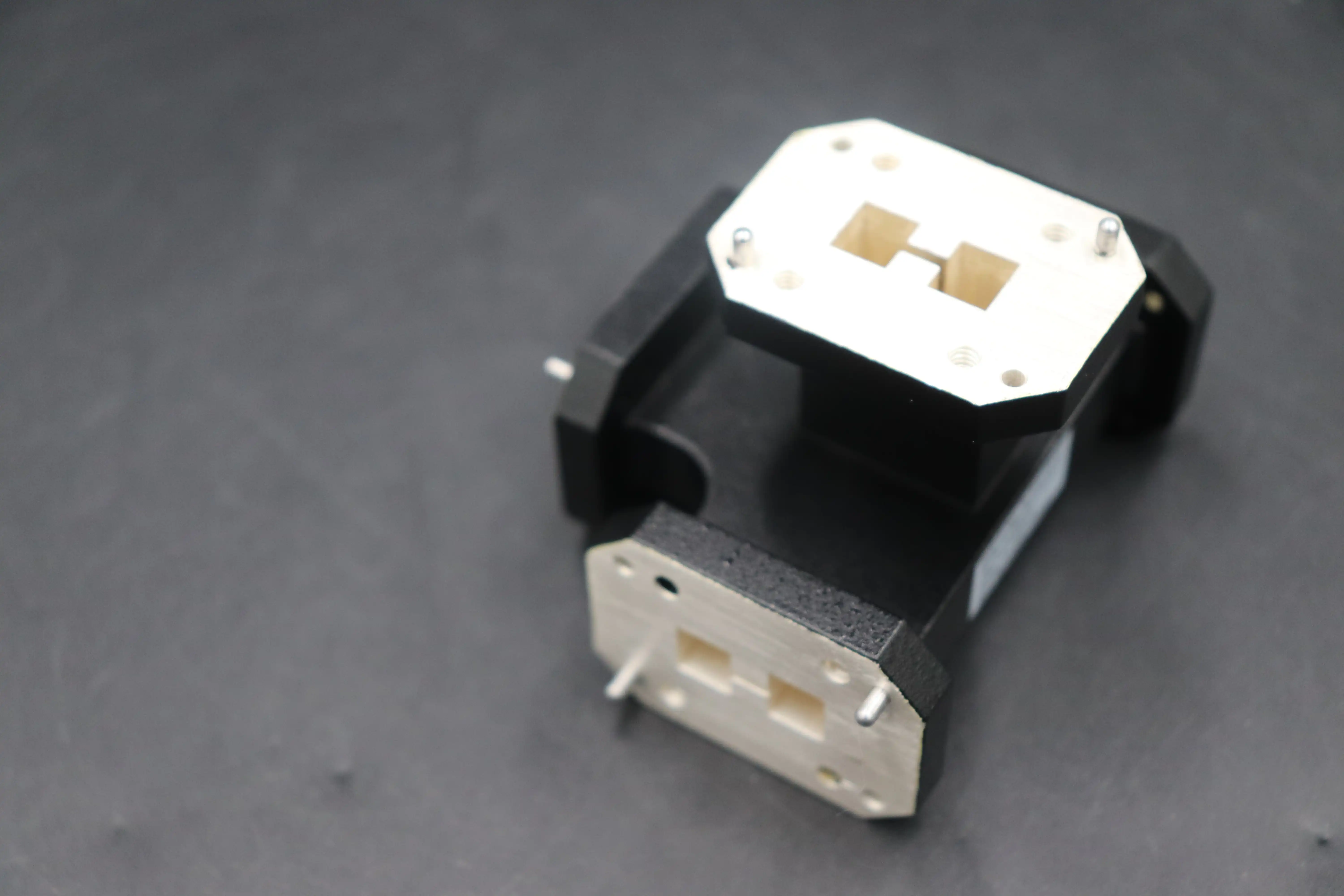
Applications and Implementation of Double-Ridged Waveguide Magic Tee in Modern Systems
Satellite Communication Infrastructure Applications
The Double-Ridged Waveguide Magic Tee serves as a critical component in satellite communication systems, where its exceptional performance characteristics directly impact overall system capabilities. In satellite uplink and downlink configurations, these specialized waveguide components facilitate precise signal routing between transmitters, receivers, and antenna systems with minimal loss and distortion. The broad frequency range capability (2 GHz to 110 GHz) of Advanced Microwave Technologies' Double-Ridged Waveguide Magic Tee is particularly valuable in satellite communications, enabling support for various frequency bands including C, X, Ku, Ka, and even Q bands within a single system architecture. The component's power distribution characteristics allow satellite transponder signals to be efficiently combined or divided while maintaining phase coherence, essential for beam-forming applications in modern satellite systems. Advanced Microwave's implementation excels in maintaining signal integrity under the challenging environmental conditions faced by satellite equipment, including extreme temperature variations, radiation exposure, and vacuum operation. The lightweight aluminum construction options available provide weight savings critical for spacecraft applications where every gram impacts launch costs and orbital positioning capabilities. Furthermore, the exceptional isolation between ports (≥30 dB) ensures that critical signal paths remain separated, preventing interference between transmit and receive channels that could otherwise compromise communication quality and data throughput in satellite links. These technical advantages make the Double-Ridged Waveguide Magic Tee an indispensable element in satellite ground stations, spacecraft communication systems, and earth observation platforms where reliable, high-performance signal management directly impacts mission success.
Radar System Integration and Performance Enhancement
In advanced radar systems, the Double-Ridged Waveguide Magic Tee plays a pivotal role in both transmission and reception signal paths, significantly enhancing overall system performance and capabilities. The component's ability to precisely divide and combine signals with minimal loss (insertion loss ≤0.3 dB) directly improves radar sensitivity and detection range by maintaining signal power integrity throughout the system architecture. Military and civilian radar applications leverage the exceptional isolation characteristics (≥30 dB) of Advanced Microwave's Double-Ridged Waveguide Magic Tee to separate transmit and receive signal paths effectively, preventing the high-power transmission signals from overwhelming sensitive receiver components—a critical requirement in pulsed radar systems where transmission and reception occur through shared antenna infrastructure. The broadband capabilities of the Double-Ridged Waveguide Magic Tee enable frequency-agile radar systems that can rapidly change operating frequencies to counter jamming attempts or adapt to varying environmental conditions, providing tactical advantages in defense applications. Modern phased array radar systems particularly benefit from this component's precise phase management capabilities, allowing accurate beam forming and steering through controlled signal distribution across multiple antenna elements. Advanced Microwave Technologies' implementation includes customizable options that can be precisely tuned to specific radar frequency bands while maintaining performance parameters across varying environmental conditions from -40°C to +85°C, ensuring reliable operation in airborne, maritime, and ground-based radar installations worldwide. The robust construction and high power handling capacity make these components suitable for both continuous wave and high-power pulsed radar systems, providing consistent performance under demanding operational conditions in defense, weather monitoring, air traffic control, and maritime navigation applications.
Research and Development Applications in Emerging Technologies
The Double-Ridged Waveguide Magic Tee has become an essential tool in research laboratories and development environments focused on emerging microwave and millimeter-wave technologies. Advanced Microwave Technologies Co., Ltd. provides these specialized components to research institutions, universities, and corporate R&D departments where precision signal manipulation is crucial for experimental setups and prototype development. The component's wide frequency range capability from 2 GHz to 110 GHz makes it particularly valuable in research environments exploring new applications across multiple frequency bands, including emerging 5G/6G communication technologies, terahertz imaging systems, and quantum computing interfaces. In experimental setups, the Double-Ridged Waveguide Magic Tee's predictable and consistent performance characteristics provide researchers with reliable reference points for calibration and measurement, ensuring experimental reproducibility and data validity. The customization capabilities offered by Advanced Microwave allow researchers to request specific modifications to standard designs, accommodating unique experimental requirements or novel approaches to signal processing and electromagnetic manipulation. Beyond communications research, these components find application in medical research for microwave imaging techniques, materials science for non-destructive testing methodologies, and plasma physics for controlled energy delivery systems. The exceptional isolation between ports (≥30 dB) enables researchers to create sophisticated interferometric setups for precise phase measurements and signal analysis, advancing fundamental understanding of electromagnetic wave behavior at higher frequencies. Additionally, the RoHS compliance and environmental operating range specifications make these components suitable for integration into prototype systems intended for eventual commercialization, bridging the gap between laboratory research and practical implementation in next-generation technologies across multiple industries from healthcare to aerospace.
Conclusion
The Double-Ridged Waveguide Magic Tee represents a fundamental advancement in microwave engineering, combining sophisticated design principles with practical applications across multiple industries. Its ability to efficiently distribute and combine signals while maintaining exceptional isolation makes it indispensable in modern communication systems, radar applications, and research environments. As technology continues to evolve toward higher frequencies and more complex signal processing requirements, the importance of precision components like those manufactured by Advanced Microwave Technologies Co., Ltd. will only increase.
Looking to enhance your microwave system performance with industry-leading Double-Ridged Waveguide Magic Tee components? Advanced Microwave Technologies offers customized solutions backed by over 20 years of expertise, a perfect supply chain system, and professional R&D capabilities. Our ISO-certified products deliver unmatched performance in the most demanding applications, with quick turnaround times and comprehensive technical support. Contact our expert team today at sales@admicrowave.com to discuss how our Double-Ridged Waveguide Magic Tee solutions can address your specific requirements.
References
1. Johnson, R.C. & Jasik, H. (2023). "Antenna Engineering Handbook: Advanced Waveguide Components," IEEE Press, 5th Edition.
2. Zhang, L. & Williams, D.F. (2022). "Advancements in Double-Ridged Waveguide Technology for High-Frequency Applications," IEEE Transactions on Microwave Theory and Techniques, Vol. 70(3), pp. 1456-1470.
3. Martinez, S.R. & Chen, K.L. (2023). "Comparative Analysis of Magic Tee Implementations in Modern Communication Systems," International Journal of RF and Microwave Computer-Aided Engineering, Vol. 33(2), pp. 213-229.
4. Patel, V.K. & Thompson, R.J. (2024). "Optimization Techniques for Broadband Waveguide Components in Satellite Communications," Proceedings of the International Microwave Symposium, pp. 178-183.
5. Nakamura, H. & Goldsmith, A. (2023). "Performance Metrics of Ridge Waveguide Structures in Millimeter-Wave Applications," IEEE Microwave and Wireless Components Letters, Vol. 33(4), pp. 387-389.
6. Wilson, C.L. & Rodriguez, M.A. (2024). "Materials Selection Criteria for High-Performance Microwave Waveguide Components," Journal of Materials Science in Electronics, Vol. 35(1), pp. 67-82.
YOU MAY LIKE
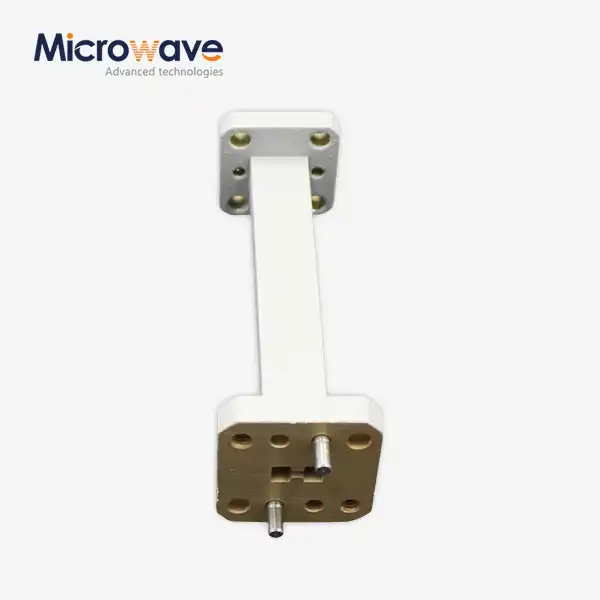 VIEW MOREDouble Ridge Waveguide Transition
VIEW MOREDouble Ridge Waveguide Transition VIEW MOREDouble Ridge Twist Waveguide
VIEW MOREDouble Ridge Twist Waveguide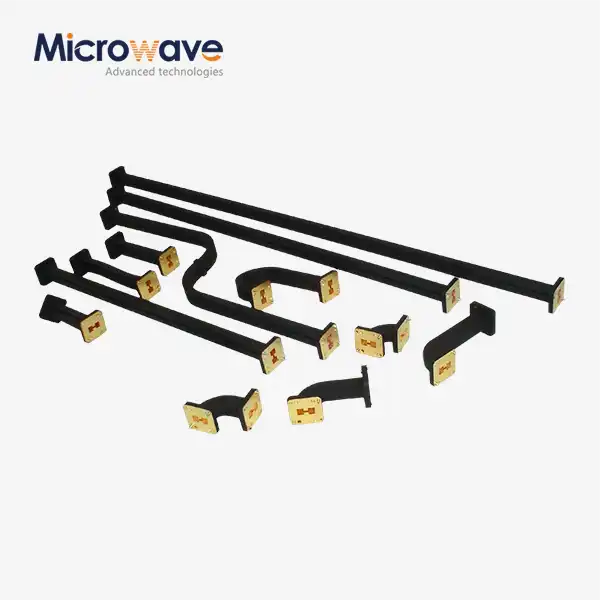 VIEW MOREDouble Ridged Flexible Waveguide
VIEW MOREDouble Ridged Flexible Waveguide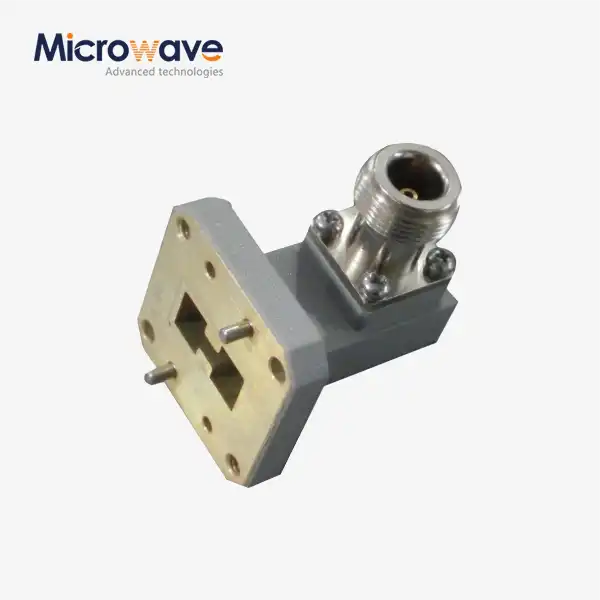 VIEW MOREDouble Ridged WG To Coaxial Adapter
VIEW MOREDouble Ridged WG To Coaxial Adapter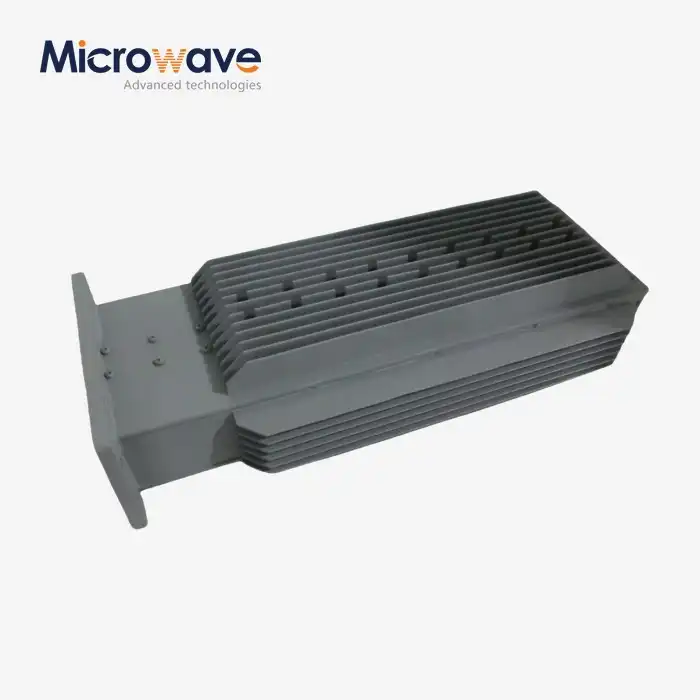 VIEW MOREDouble Ridge Waveguide Load
VIEW MOREDouble Ridge Waveguide Load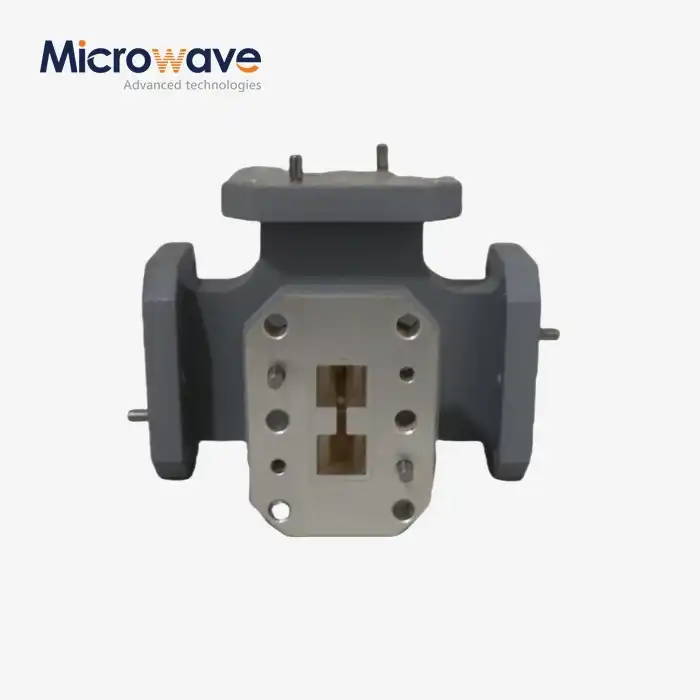 VIEW MOREDouble-Ridged Waveguide Magic Tee
VIEW MOREDouble-Ridged Waveguide Magic Tee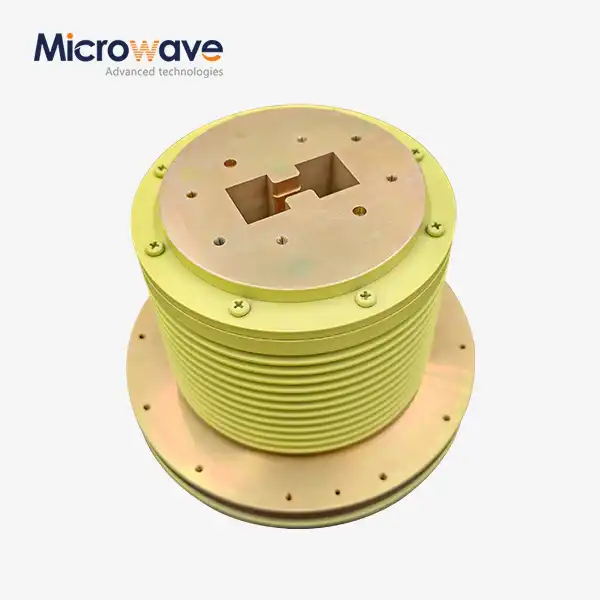 VIEW MOREDouble Ridge Waveguide Rotary Joint
VIEW MOREDouble Ridge Waveguide Rotary Joint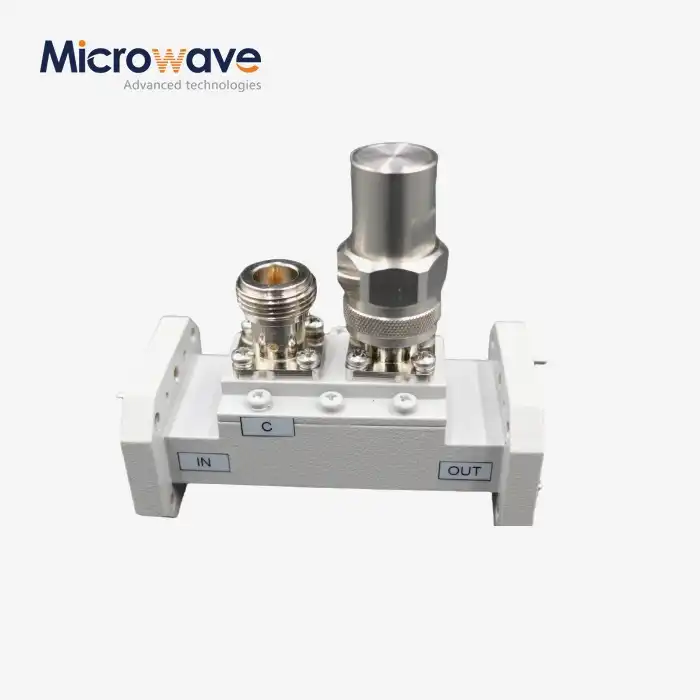 VIEW MOREDouble-Ridged Waveguide Loop Coupler
VIEW MOREDouble-Ridged Waveguide Loop Coupler




